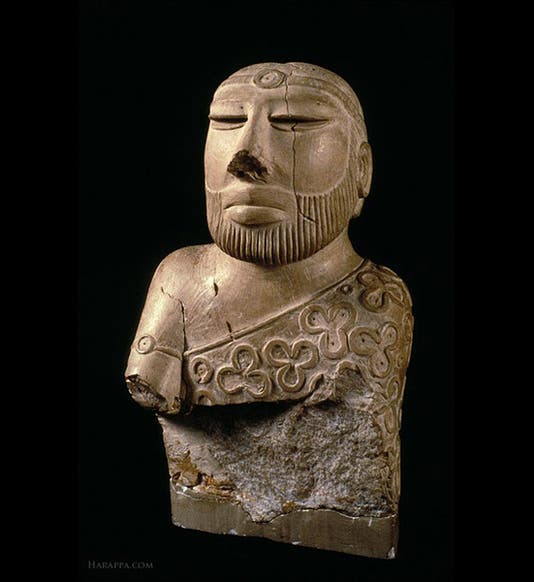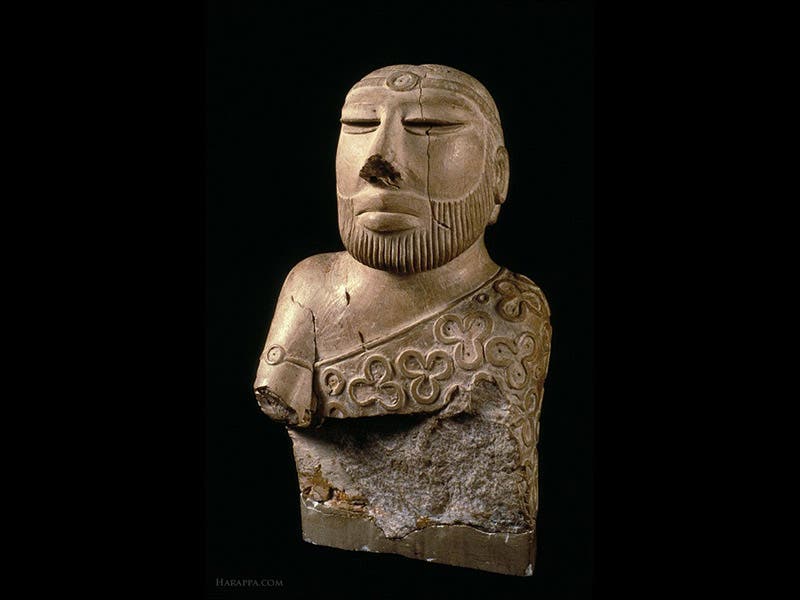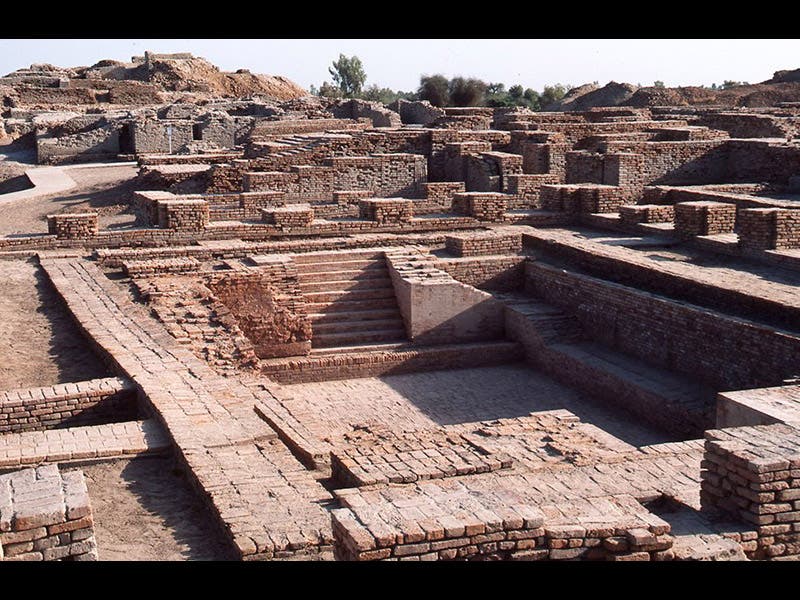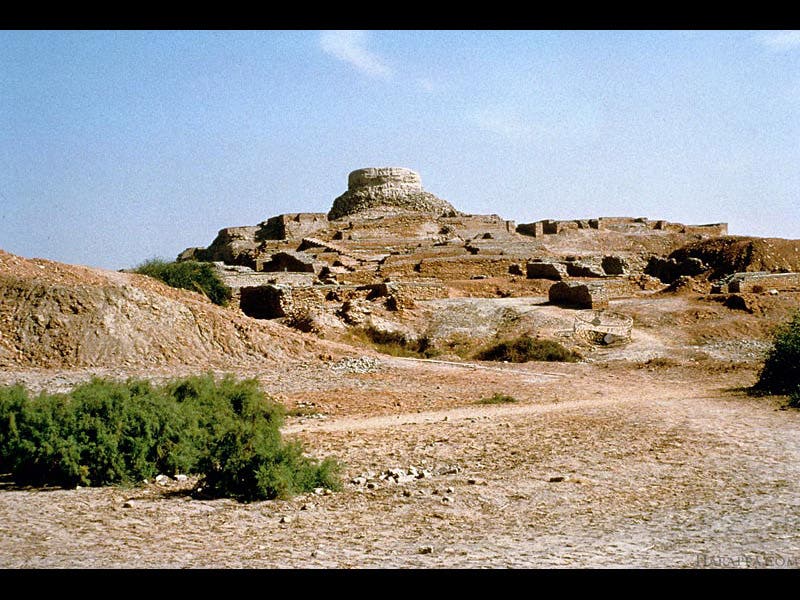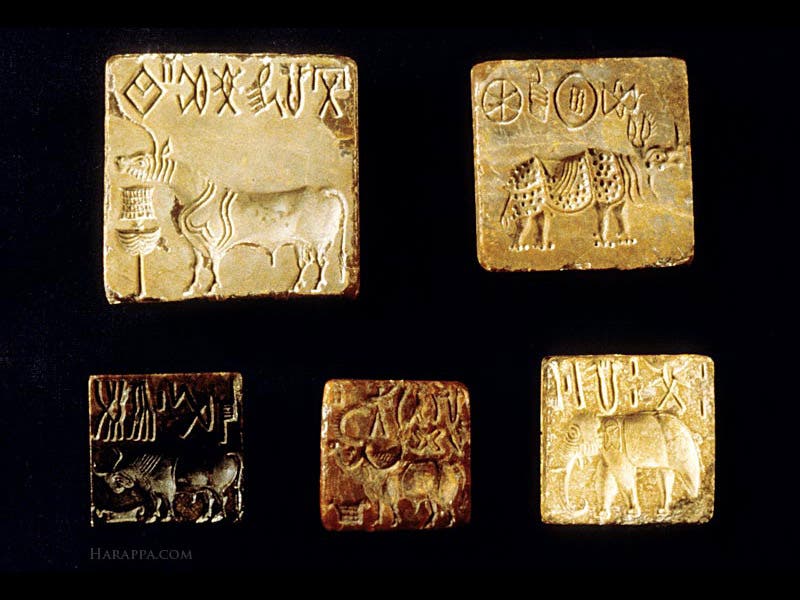Scientist of the Day - R. D. Banerji
R. D. Banerji, an Indian archaeologist and ancient historian, was born Apr. 12, 1885. Banerji (also known as Rakhal das Banerjee and Rakhaldas Bandyopadhyay) was working for the Archaeological Survey of India in 1920, surveying the lower part of the Indus River valley (now part of Pakistan), when he heard reports of a buried site surmounted by a stupa, a small hemispherical structure used by Buddhist monks for meditation. If the site were Buddhist, then it couldn't be any more than several thousand years old. Banerji examined the area, made trial trenches, discovered seals and artifacts, and became convinced that a much older settlement lay buried under the mound. Later investigations proved him right. Banerji had discovered Mohenjo-daro, the oldest and best preserved settlement of what we now call the Harappan Culture or the Indus Valley Civilization.
The city, still only partially excavated, and dating to about 2500 BCE, is quite impressive, made entirely of fired brick, with paved streets and a sewer system, and a large pool at town center (second image). The stupa that aroused Banerji’s interest can be seen above as well (third image). When Banerji began work there, everything below the stupa was buried. By 1925, an abundance of seals had been discovered (fourth image), and a year or two later, wonderful art objects were turned up, such as a bust of a priest/king (first image), and the now-famous Dancing Girl of Mohenjo-daro (fifth image). The ancient city of Harappa , 400 miles to the north, was being excavated at the same time, and it became clear that Harrapa and Mohenjo-daro had a great deal in common and were part of a culture that pushed back the date of Indus Valley civilization by a full 2000 years, to around 2700 BCE.
The date usually given for Banerji's discovery is 1922, so presumably that is the year he submitted a report to his boss on what he had found. That boss, the Director of the Archaeological Survey of India, was an Englishman, John Marshall, and he seems to have taken over the excavations at Mohenjo-daro, while Banerji was shipped out to the Bengal-Assam region on the other side of India. He disappears from the Mohenjo-daro record and ends up as professor of ancient Indian history at Banaras Hundu University in Uttar Pradesh, where he died in 1930, just 45 years old. There is some feeling among modern Indian scholars, and perhaps a little evidence, that Banerji has not received the credit he deserves, not just as the discoverer of Mohenjo-daro, but as the person who first realized that the keys to understanding the ancient Indus Valley civilization lay there.
Mohenjo-daro was named a World Heritage Site (no. 138) in 1980. There are ten additional photographs on the webpage for Mohenjo-daro, which they spell Moenjodaro, presumably the Pakistani spelling. It is unfortunate that the lengthy citation nowhere mentions Banerji.
Dr. William B. Ashworth, Jr., Consultant for the History of Science, Linda Hall Library and Associate Professor, Department of History, University of Missouri-Kansas City. Comments or corrections are welcome; please direct to ashworthw@umkc.edu.

